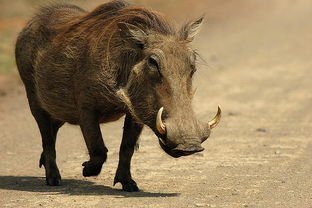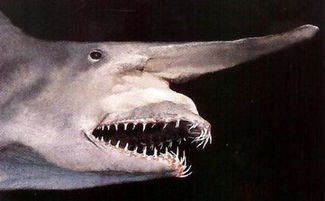warthog
Warthogs look like a complex of toads, pigs, and rhinos. Its ugly appearance makes warthog one of the few star species in the pig family. Verrucous pigs are not dangerous to humans. they live mainly on the African savanna and feed on the shoots and massive stems of plants on the savanna. Verrucous pig body let a person feel ugly " wart" is mainly composed of bone-like projections of the head. Among them, the male wart pig head " wart" extremely hard, is the main weapon to attack his opponent. In addition, warthog and several pairs of outward growth, looks very much like saber fangs. These tusks make the warthog's ugliness even more obvious.
Although warthog looks ugly, there are still some animals like mongoose that like to be with warthog. Like rhinos and crocodiles who like birds to accompany them to help them remove skin parasites, the banded mongoose s living around warthogs feed on skin parasites such as fleas that live on warthogs.
Tarantula
Like ordinary spiders, tarantulas have eight eyes, but the middle pair is much larger than the other six. Add its revealing two fangs furry cheeks, more make it look terrible. Tarantulas can be seen everywhere on earth except in snow-covered areas. Adult tarantulas can grow up to an inch wide.
Female tarantulas take care of small tarantulas. Female tarantulas lay the mattress with silk before laying eggs, and then cover the eggs with silk to make a " thick silk satin" which is covered by " soft silk quilt" inside the egg sac to prevent wind and rain. In order to prevent accidents, tarantulas simply put the oocysts under the abdomen, with long steps with it away. After the baby wolf spider was born, the female spider is take good care of. Young children have climbed up the mother's back or abdominal wall, by the mother carrying around, hunting. In this way, to continue until the young spider molting for the second time, the female spider will safely let them leave themselves, their livelihood.
Spermatic shark
Although it seems to us that deep-sea animals are more terrifying in appearance ( because of deep-water pressure ), the shark is one of the most terrifying of these deep-sea animals. The skin of the shark, mitsukurina owski, is extremely thin and translucent due to a lack of pigment, which makes its bright red muscles visible and is the main reason for its overall pink appearance.
The way sperm sharks hunt also makes people feel bad. As the shark approaches its prey, its jaw inflates rapidly, creating an almost vacuum inside its mouth at the moment of prey. Driven by air pressure, sea water and prey pour into the mouth of the shark. If prey is caught by a shark, trying to escape is a futile exercise. The sharp teeth in the mouth of the shark allow it to quickly crush and devour its prey.
South elephant seal
Mirou nga leonina, an English name for southern elephant seals, lives mainly in Argentina, south Africa, new Zealand, antarctica, and areas near the southern ocean. South elephant seals have good diving skills and can dive nearly 6,000 feet from the sea. This diving technique makes south elephant seals highly predatory, with squid, octopus, rays and eels as staple foods, and also catches penguins and young sharks when food is scarce. Because of its size and wide range of hunting, south elephant seals are nicknamed " coastal behemoths".
In general, adult male elephant seals are larger than females. The largest south elephant seal ever discovered weighs 11,000 pounds ( 5 tons ) and is 22.5 feet ( 6.9 meters ) long. This makes south elephant seals the largest carnivore on earth. In addition, the south elephant seal is one of the ugliest animals on earth: a long, quivering nose, whale - fat waistline and a dull gray complexion, not to mention its unpalatable face.
Star - nosed mole rat
An English scientific name for the star-nosed mole cony luria cristata, found chiefly in eastern north America, eastern Canada, and the northeast United States. The star-nosed mole is the only member of the star-nosed mole family and the star-nosed mole genus. Star - nosed moles live mostly in humid environments and feed on small invertebrates, aquatic insects, earthworms, and molluscs. Like other species of mole, star-nosed moles dig tunnels near the ground for food, often at the bottom of the water.
Star - nosed mole is characterized by its 21 tentacles at the tip of the nose, around the tip, like the light of the stars, so called. Through these tentacles, the star-nosed mole can find prey in a completely dark environment. According to scientists, the star-nosed mole is several times more capable of finding prey through its tentacles than any other mole is able to hunt by vision alone.
Almiqui
Almiqui was considered extinct. Until 2003, the animal was rediscovered in the mountains of eastern Cuba and named almiqui. Almiqui has a brown coat, a pig-like mouth, and a strangely long face, with a long oval complexion, a gold-black complexion, and slender legs.
Proboscis monkey
Nasalis larvatus, the English scientific name for rhesus monkey, is mainly characterized by its large and long nose. But zoologists do not yet know the use of their long noses. Rhesus monkeys live mainly in the kalimantan region of southeast Asia. Male Rhinopithecus grow longer and larger as they age, and can grow to the size of eggplant at their maximum. While the female's nose is normal. Rhinopithecus prefer to live in groups, often in groups of 10 to 30, ranging from less than 2 square kilometers.
Rhinopithecus monkey has a large abdomen and its digestive system is divided into several parts to help it digest leaves. Its food includes fruit and seeds in addition to leaves. Rhinopithecus are mainly found in mangroves, marshes and riverside forests on the coast of Borneo.







good